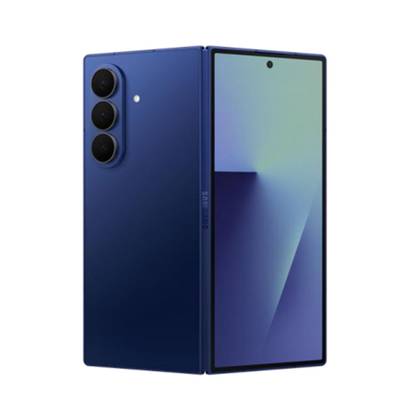Whenever a new book-style foldable comes out, people balk at the price. With an MSRP of two grand, it’s understandable. But the newest foldable, Samsung’s Galaxy Z Fold 7, doesn’t actually cost most folks $2000. Here’s what the people who buy one are actually paying.
Carriers Announced Discounts at the Phone’s Launch
Here in the United States, most people buy their phones directly through their carrier, and prices are often obfuscated in the form of monthly payments. But carriers also often entice customers with deals.
On launch day, Verizon announced it was already offering the Galaxy Z Fold 7 for up to 55% off. In this instance, you had to sign up for the company’s unlimited data plan for $65 a month and trade in a device in any condition from the list of eligible manufacturers.
Samsung is incentivized to price phones high in part because of carriers, who want expensive phones that they can heavily mark down so that people feel like they’re getting a better deal. Just like in the fashion industry, these devices are meant to be sold through sales and enticing offers, rather than at their full price.

- Brand
-
Samsung
- RAM
-
12GB
- Storage
-
256GB
- Battery
-
4,400mAh
- Operating System
-
One UI 8
- Connectivity
-
5G, LTE, Wi-Fi 7, Bluetooth 5.4
Samsung’s thinnest and lightest Fold yet feels like a regular phone when closed and a powerful multitasking machine when open. With a brighter 8-inch display and on-device Galaxy AI, it’s ready for work, play, and everything in between.
Samsung’s Own Trade-In Deals Can Reduce the Price By Half
Let’s consider the trade-in deals that Samsung offers directly. I own a Galaxy Z Fold 6 in “like new” condition. If I were inclined to trade in my phone every year, I could get the newest foldable for less than the price of a new Galaxy S25 Ultra. I’m not saying that’s cheap, nor is that something I’m inclined to do, but it’s still much less than spending two grand.
What’s more impressive is that if you upgrade your fold every two or three years, you still get a large discount. A Z Fold 5 in great condition currently takes $900 off the price of a Z Fold 7. A Z Fold 4 takes $800 off.
Considering how many foldable fans don’t want to go back to non-folding phones, those who stay committed can upgrade their phone every few years for much less than the sticker price. It’s worth doing, too, since there aren’t many other options on the market.
With the OnePlus Open now almost two years old, and phones like the Oppo Find N5 only available as imports without warranties, if you don’t want the Fold 7, your only other new option is the Google Pixel 9 Pro Fold or its soon-to-be-released follow-up. That said, I think there are many who would actually be happier with the Galaxy Z Fold 6 instead.
Samsung isn’t just trying to sell this phone to existing Fold owners. You can get good discounts by trading in a Galaxy S Ultra or by abandoning your iPhone. In other words, if you’re one of the majority of Americans who own either an Apple Phone or a Samsung phone, you’re likely to get several hundred dollars off the price of a Z Fold 7.
Foldables Do Not Hold Value on the Second Hand Market
Now let’s talk about the real discounts. As I mentioned, I own a Galaxy Z Fold 6. I’m writing these words on it right now. My Z Fold 6 isn’t just my phone—it’s my PC. I bought this device for $980 before tax.
This is the 512GB model, so that price is over 50% off MSRP. I bought this device on Swappa, an online marketplace for used devices, in mint condition. Since the previous owner paid for Samsung Care+, my phone even came with a couple years of a protection plan baked in. That’s an additional savings of a couple hundred bucks.
This is not my first Samsung foldable. I first bought a 512GB Galaxy Z Fold 5 for $930 before tax. That was an open box phone, meaning it was essentially new. Each time I’ve bought a foldable, I’ve purchased it for around the same price as people spend on an iPhone. Is an iPhone a cheap phone? No, but it’s also the best-selling phone in the US.
Foldables simply don’t hold on to their value on the second-hand market. You can already snag a Z Fold 7 in the realm of $1600, and the phone has only been out a few weeks.
I personally like to wait a few months. The Z Fold 6 was similarly priced when it launched last summer, and I was able to get it for over half off by the holidays.
If you are blown away by what Samsung has done with the Z Fold 7, I fully believe you can get one for Christmas for far less than the price you’re seeing emphasized in every review. After all, foldables aren’t for everyone. Many people try them out and decide that the form factor just isn’t for them. And when they put that phone up for sale, it feels great to be the person waiting to buy their lightly-used device.
Do I want to see foldables come down in price? Absolutely. Their sky-high sticker price is part of the reason adoption has stalled for as long as it has. But it would be a disservice for me to tell you that you need to pay $2000 to get one. You don’t.
And if your heart isn’t set on Samsung’s newest foldable, you can dip your toes into the book-style foldable market for around $600 by picking up a Pixel Fold. That’s a two-year-old foldable that still has several years of software support left in it, and it will cost you roughly the same as the more budget-oriented Pixel 9a.

